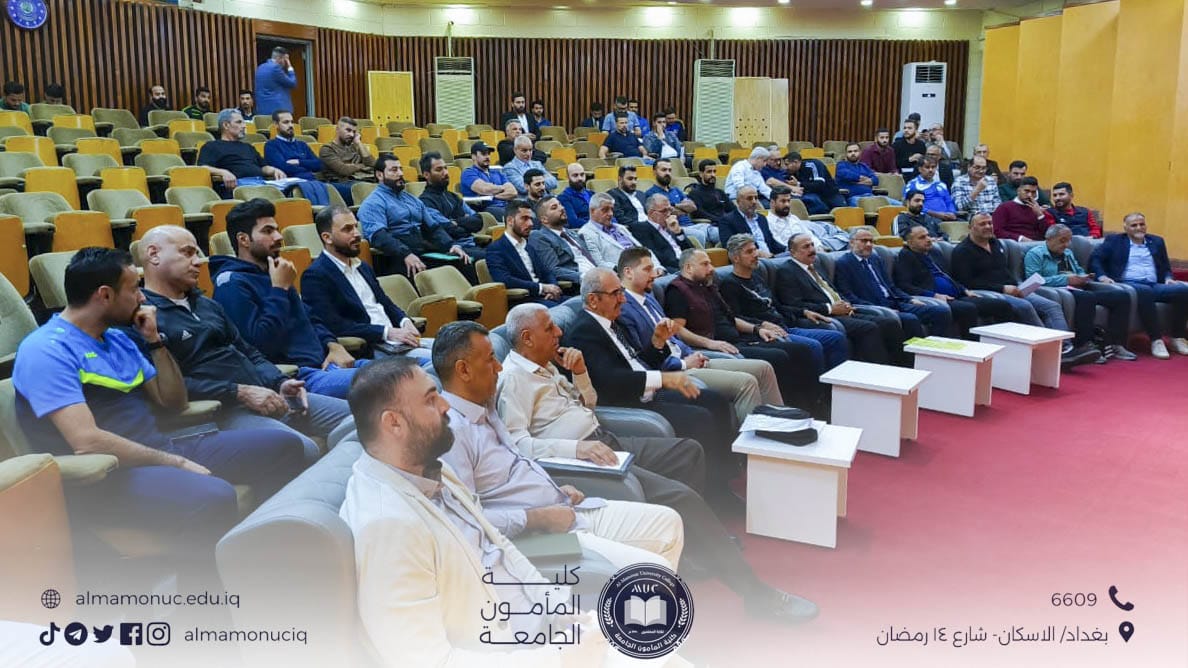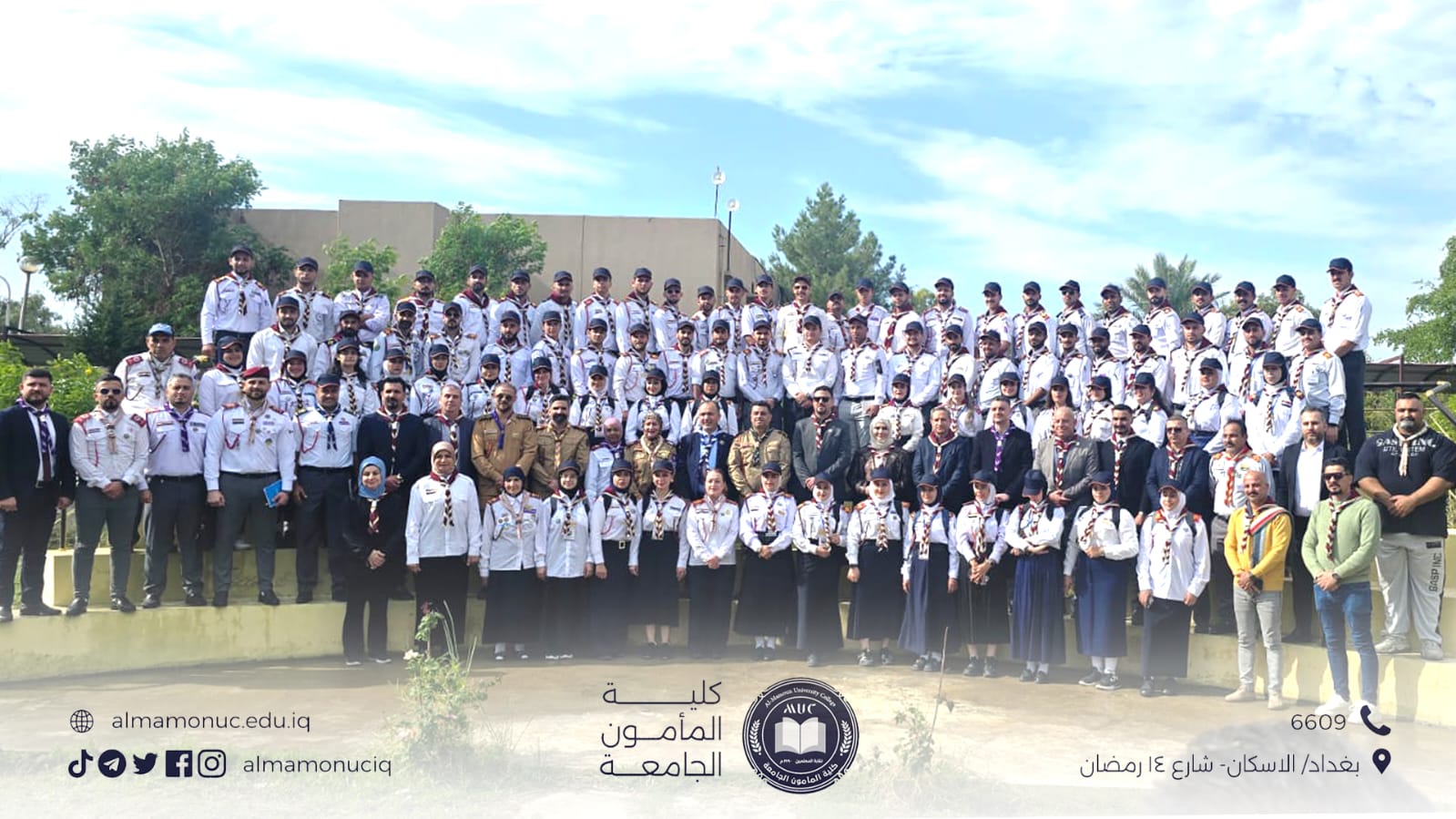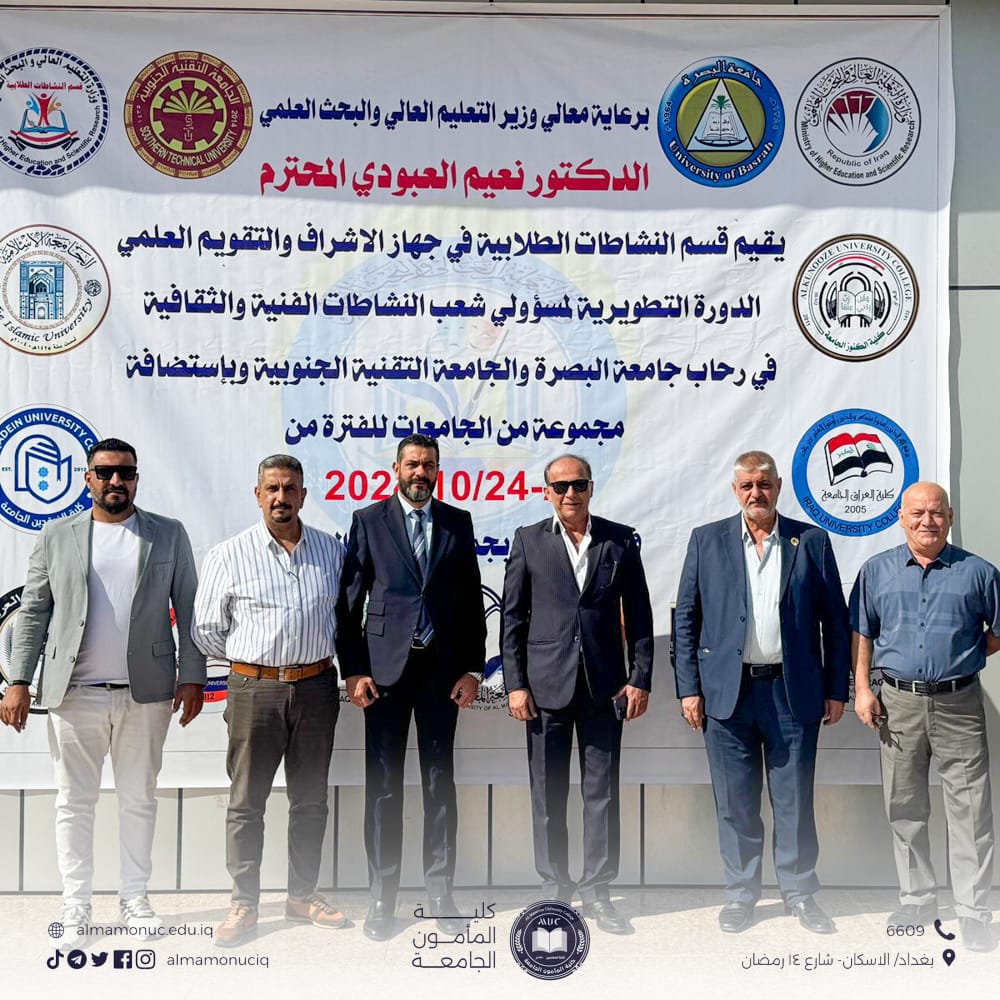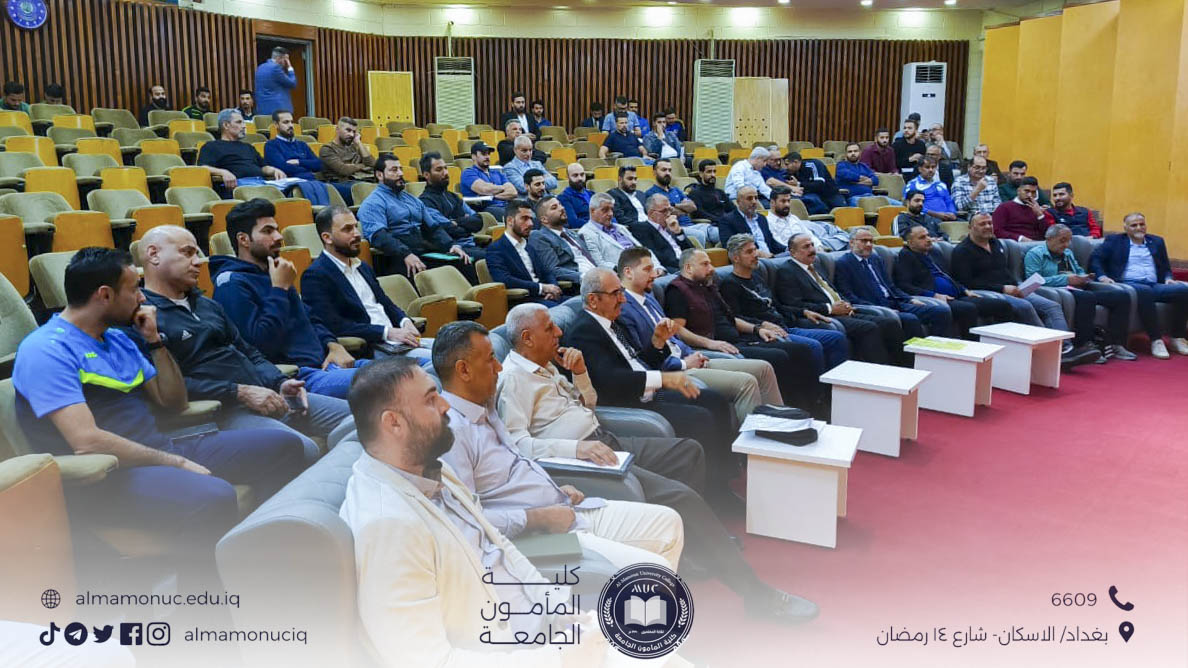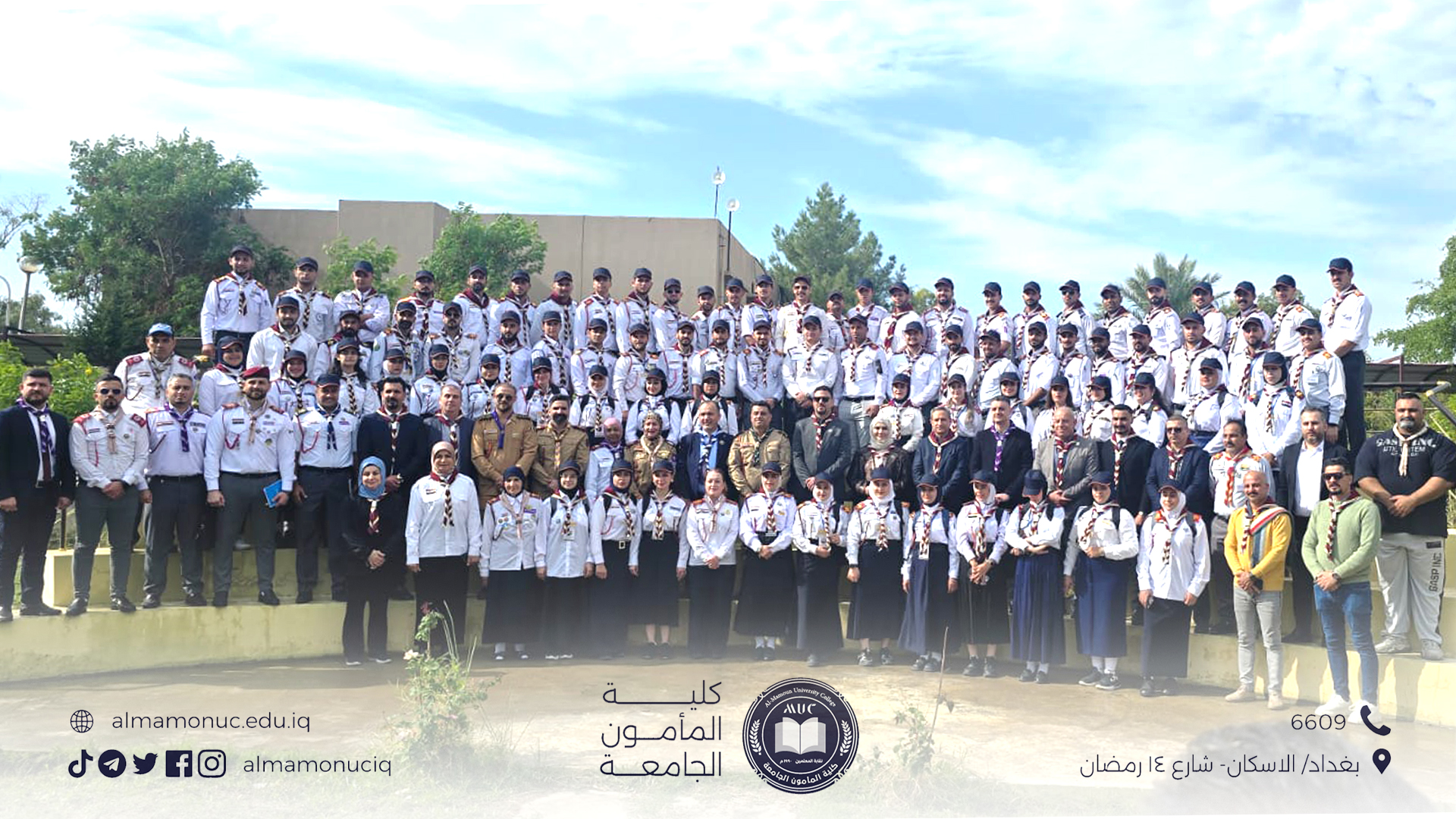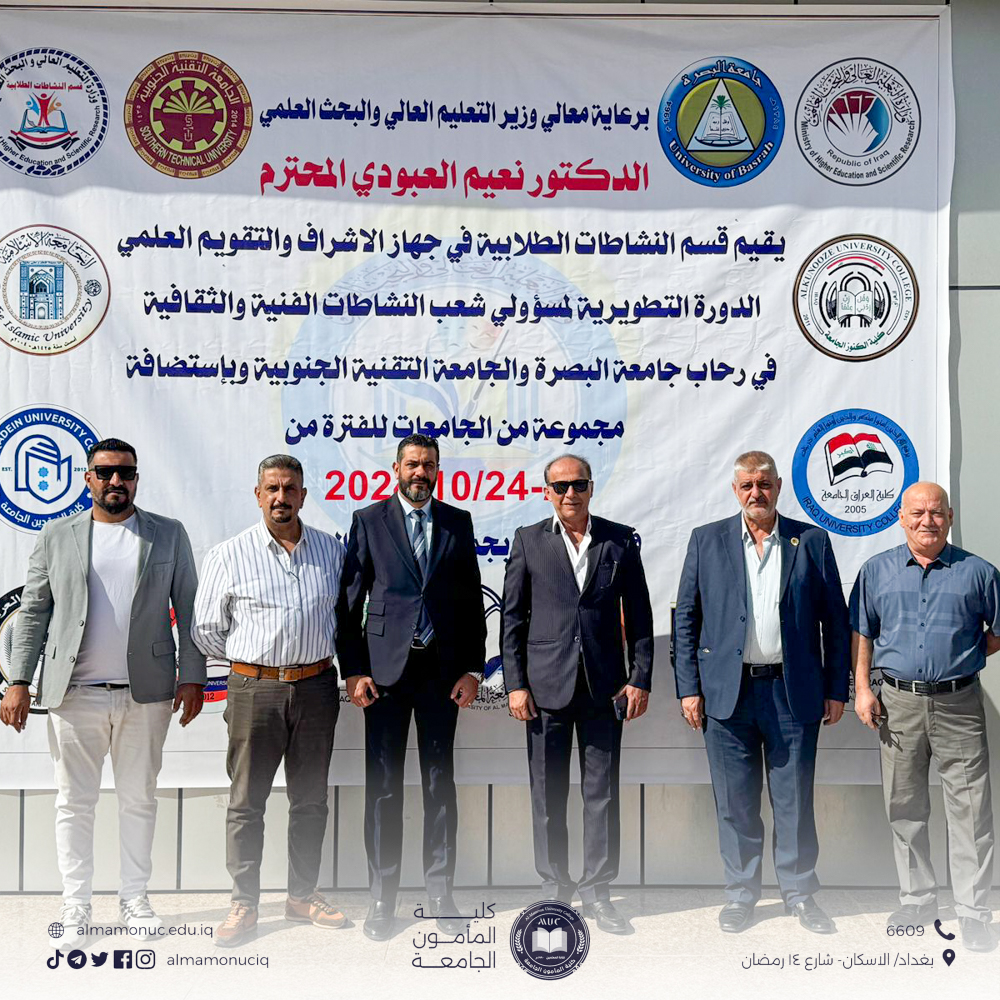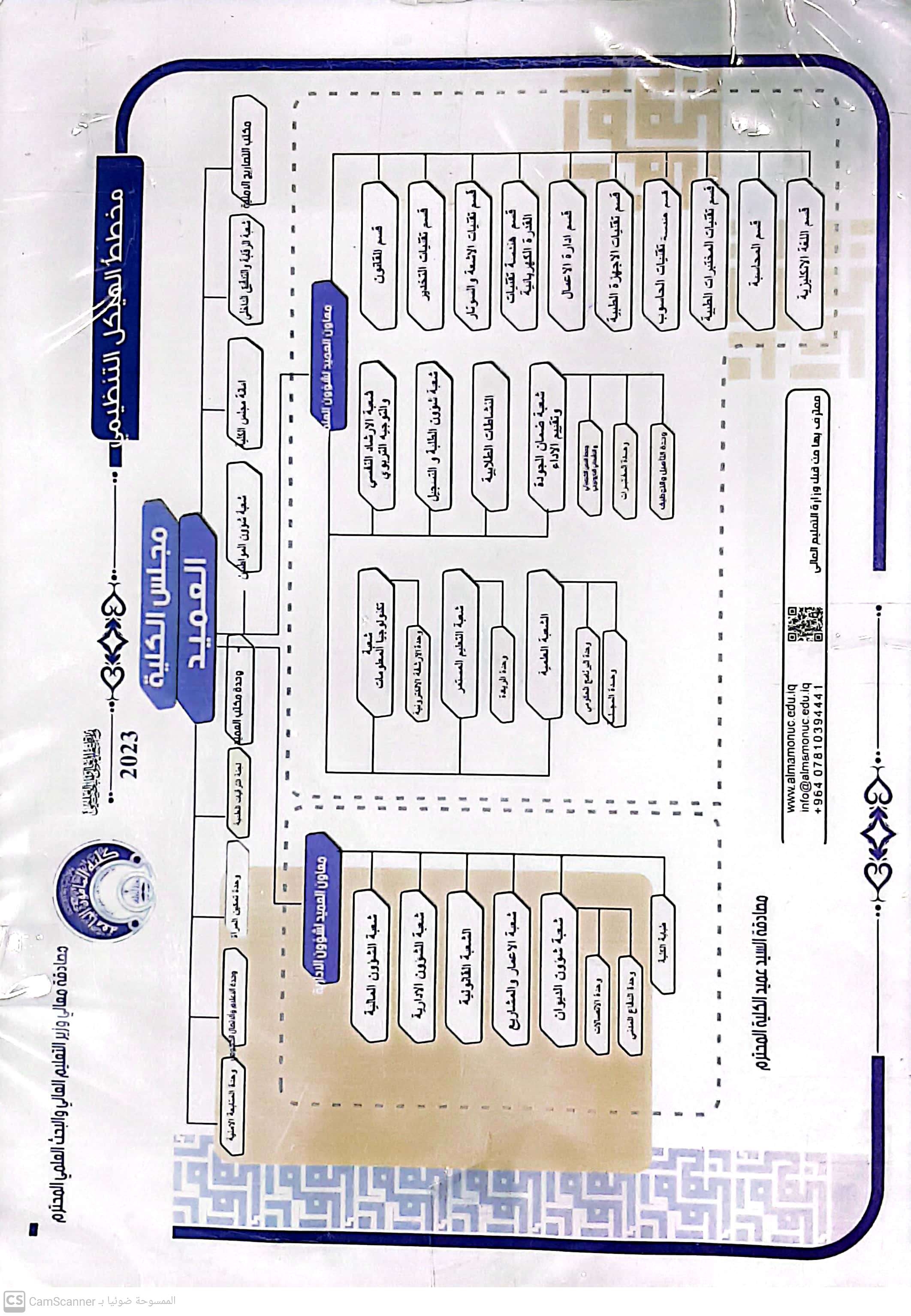
Under the patronage of the esteemed Dean, Prof. Dr. Abdul Karim Hussein Ismail, the Continuous Education and Scientific Development Division held a scientific symposium entitled: "Advancing the Status of Transmission and Distribution Networks in Iraq's Electricity System". Assistant Professor Dr. Hossam Abdul Karim Asber and Lecturer Tariq Hussein Kamil presented the symposium, which was attended by several Al-Mamoun University College faculty members and students.
In this regard, Prof. Ismail highlighted Iraq’s pioneering role in introducing electricity to the Middle East over 100 years ago, dating back to the period of British colonialism in 1917, when the first electric machine was installed in the Khan Dallah building in Baghdad. Since then, Iraq has witnessed a complex history that has profoundly impacted its electrical network and usage.
Just before the Gulf War, Iraq’s generation capacity reached 9,295 MW, covering nearly 87% of Iraq's population with electrical services. During the Gulf War, the electrical network suffered extensive damage, with around 90% of the grid destroyed, affecting about 80% of gas turbine units and numerous transmission lines. Post-war, only about 50 units remained operational, with a capacity of 2,325 MW. Following the ceasefire, Iraq launched a rapid reconstruction campaign using local resources and expertise, restoring 25% of the damaged capacity and reaching 3,000 MW within six months.
Iraq faced debilitating sanctions, which severely impacted energy production. Load-shedding measures were implemented in 1992 to cope with rising demand and limited resources. As a precautionary response to the financial and energy crises caused by the sanctions, self-financing was introduced across the electricity departments in 1996. This was followed by the establishment of the Iraqi National Electricity Authority, which later became the Ministry of Electricity at the end of 2002. By early 2003, Iraq’s generating capacity stood at 4,500 MW, still insufficient to meet demand, and power outages remained common.
The 2003 invasion and subsequent looting severely impacted Iraq’s energy infrastructure. Power outages worsened as maintenance was severely affected, and spare parts ran low. By 2004, capacity had dropped to around 3,300 MW, while demand reached nearly 6,000 MW, as reported by the Project and Contracting Office (PCO). By 2006, peak electricity supply averaged 4,280 MW against a demand of 8,800 MW. In mid-2013, production reached around 10,000 MW, while demand exceeded 14,000 MW.
Impact of ISIS (2014 and Beyond)
Before June 2014, Iraq’s installed capacity (excluding the Kurdistan Regional Government) was 26,900 MW. When ISIS seized Mosul and other areas in the north and west, extensive damage was inflicted on numerous power stations and substations. This crisis severely hampered Iraq’s economic development plans, including initiatives to stabilize the fragile electrical sector, which had been plagued by long-term power outages. In 2015, federal investment in the electricity sector dwindled to only $3 billion, according to federal budget figures.

